Ukiyo-e, or “pictures of floating worlds” were woodblock prints that became wildly popular in 17th -19th century Japan. The diverse subject matters ranged from travel scenes and landscapes to flora, erotica and even medical prints. And for a select group of artists who created a series of personified anatomical depictions of internal bodily functions, it would appear that being a great artist wasn’t enough: they also had to be immersed in the inner-workings of human body.
Inshoku Yojo Kagami (“Mirror of the Physiology of Drinking and Eating”) depicts a male sitting in front of a meal and drinking sake. The title is sometimes translated as “Rules of Dietary Life” and was created by Utagawa Kunisada, who portrayed small figures within the torso, directing the organs and indicating the different stages of the digestive system. The last figures at the bottom are guarding the urine gate (小便門) and the feces gate (大便門). The entire text is written in ancient Japanese and can be hard to make out, even for a seasoned reader of Japanese. But a cataloguer at Sothebys explains:
the gall-bladder assumes the function of an inspector controlling in proper order the condition of the entire body. After the food supply is worked up, it is carried to the spleen which, paradoxically, is located in the upper right-hand side of the abdomen. The heart is participating in the “burning process”. In the centre of the heart a scholar samurai is presiding over the life process with two piles of books in front of him.
The sister print is Boji Yojo Kagami (“Rules of Sexual Life”) and was likely made by one of Kunisada’s students. It depicts a woman in elaborate, colorful dress, smoking a pipe. Similar to its counterpart, the print illustrates personifies the various internal organs but with an emphasis on those necessary for giving birth, like the uterus. Together, the prints were meant to be cautionary statements that overindulging in food, drink and sex would lead to illness.
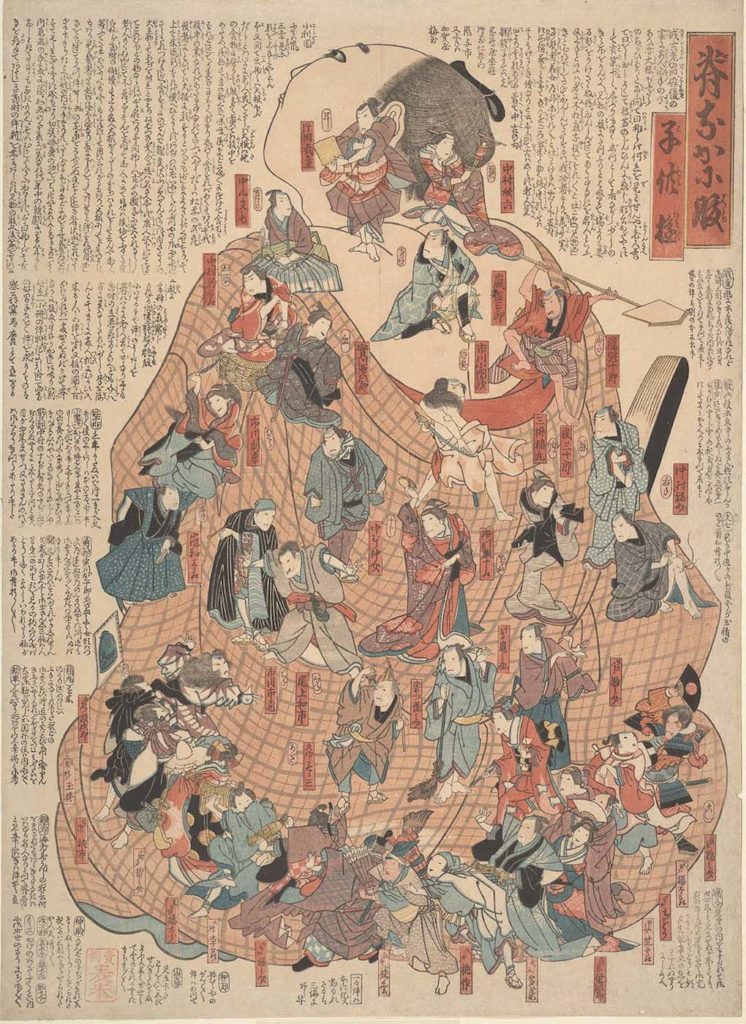
“Back and abdomen, children’s games” (Senaka ni hara kodomo asobi) by an unknown artist. Late 19th C.
The arts site Hyperallergic points out that there is an extensive collection of digital Japanese woodblock prints at USCSF Library, where many of these were located.

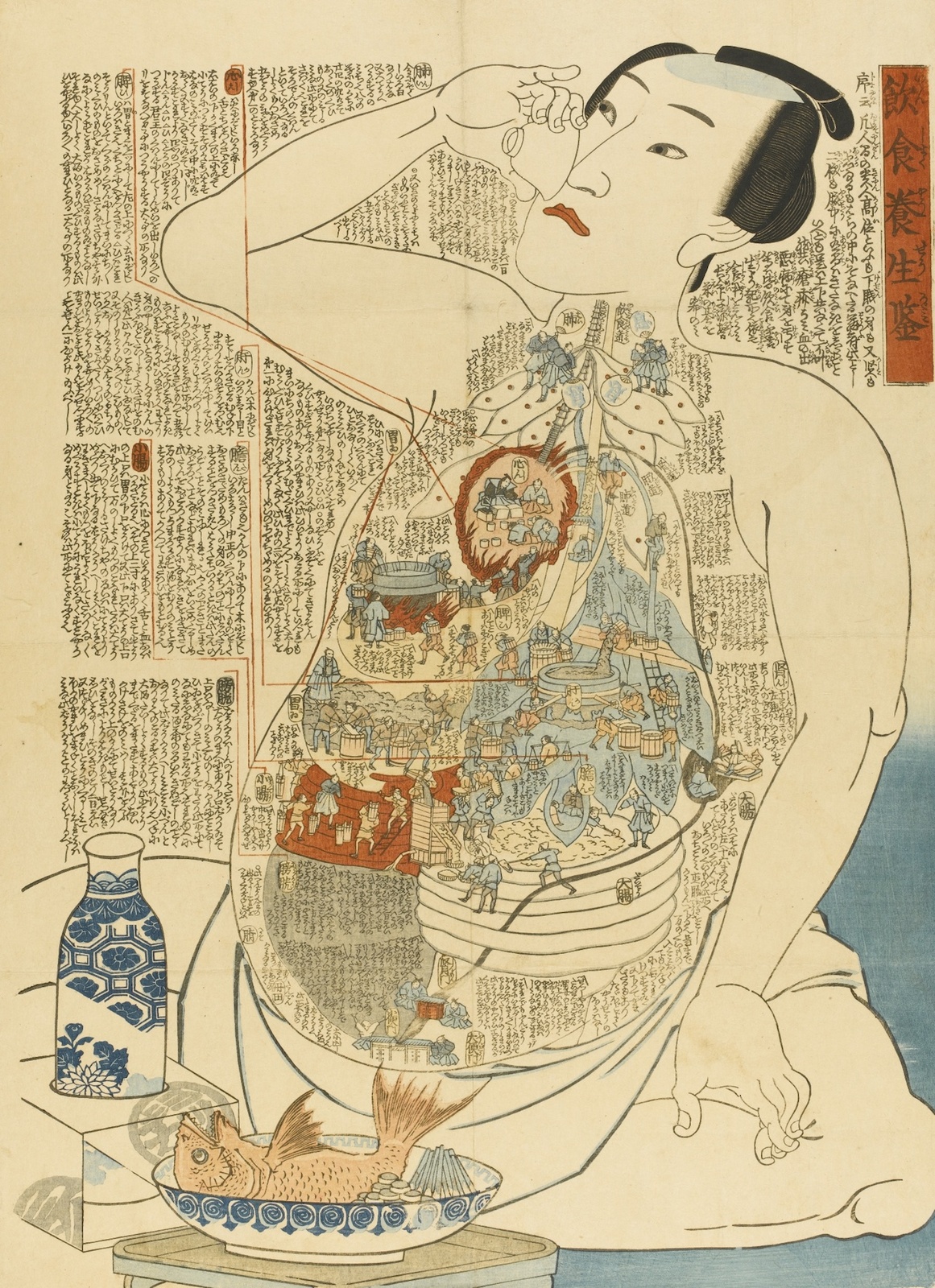
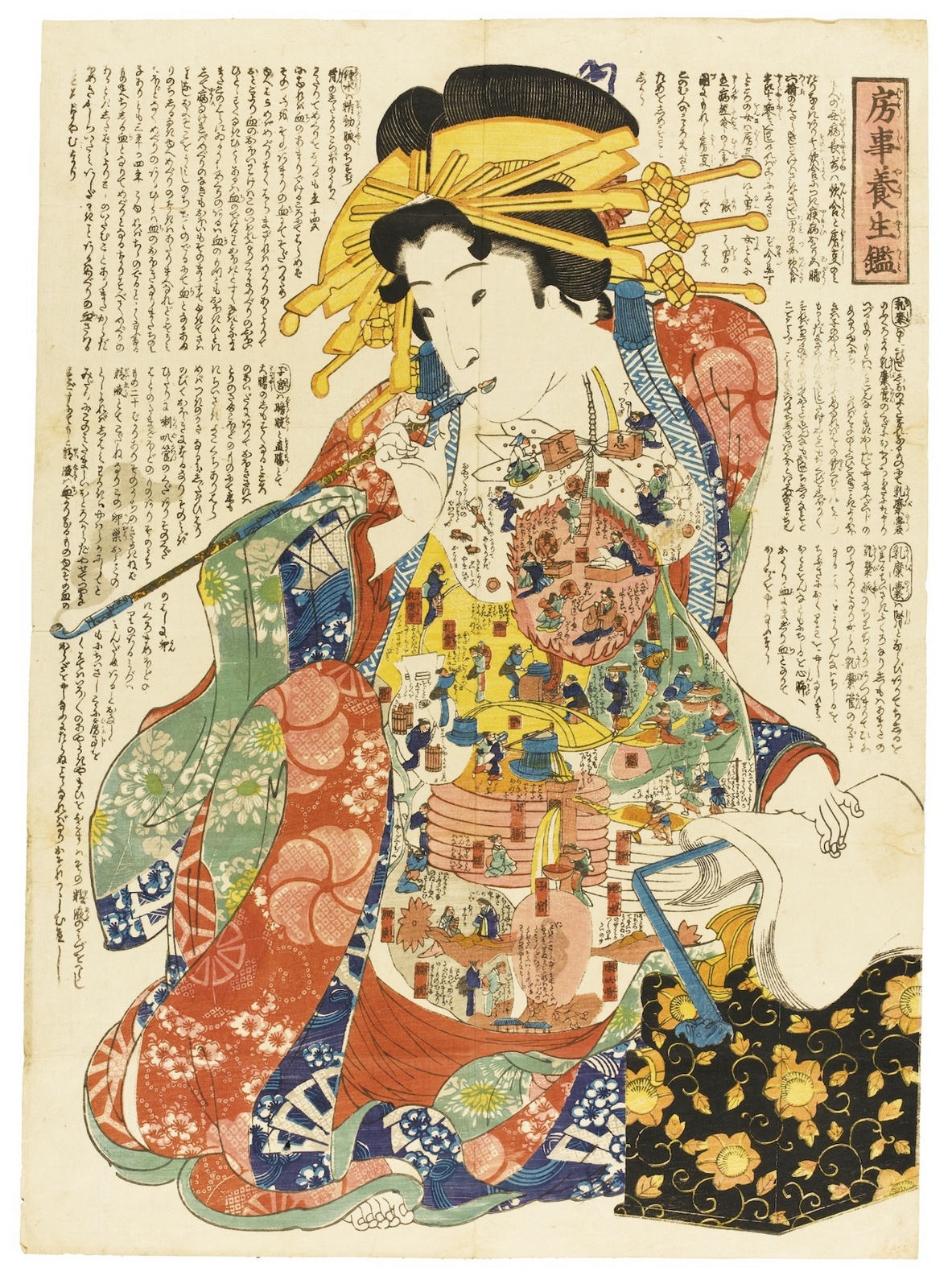
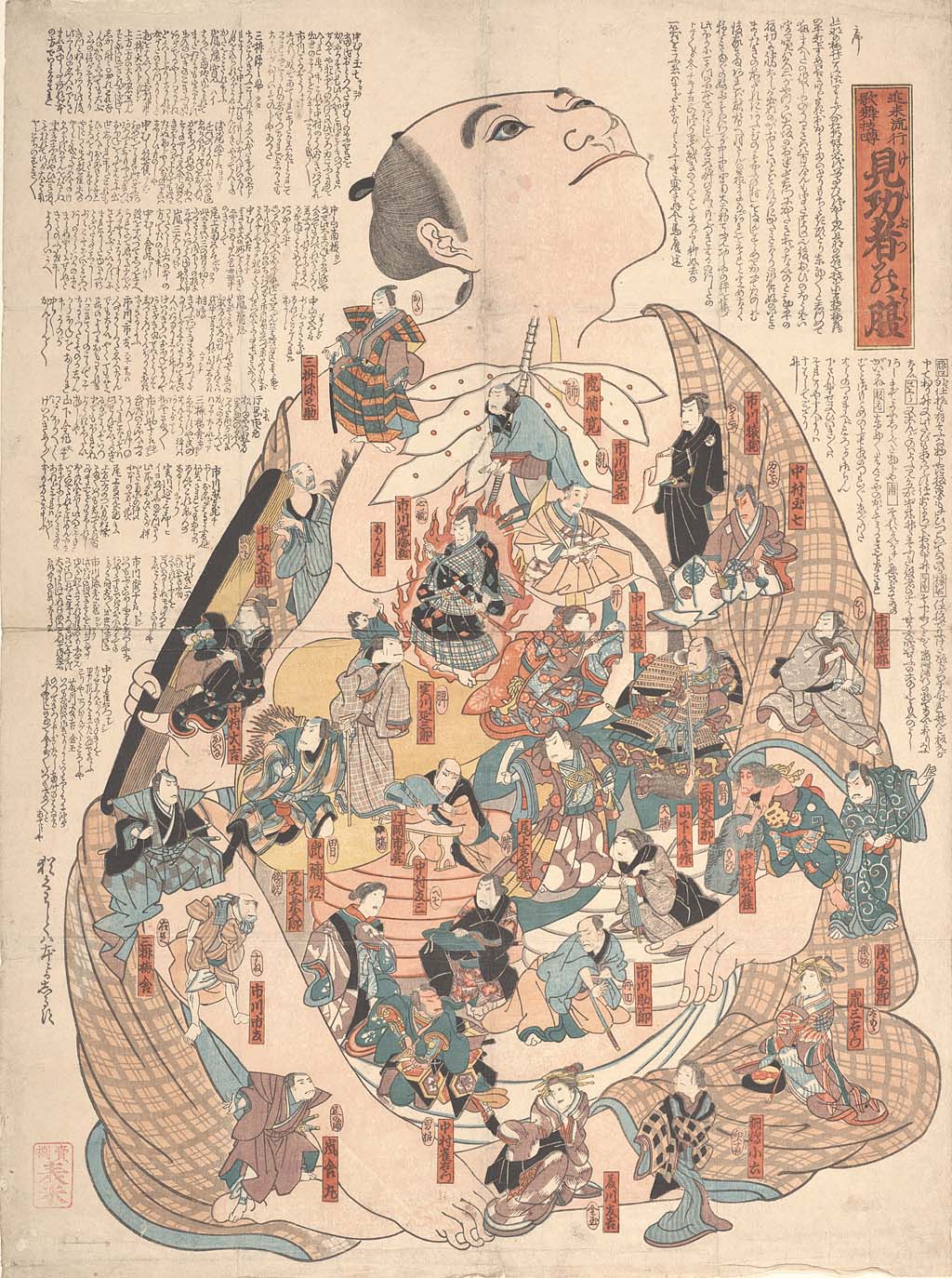


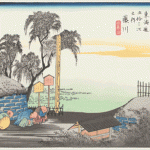
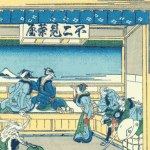
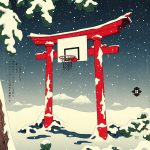
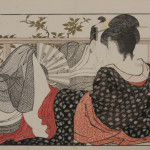


















September 6, 2016 at 8:04 am
Hate to be a stickler, but it is most definitely NOT written in “ancient Japanese” (like the article says), just pre-modern Edo era Japanese. One obvious “tell” is that if it were written in “ancient Japanese” there wouldn’t be any hiragana…